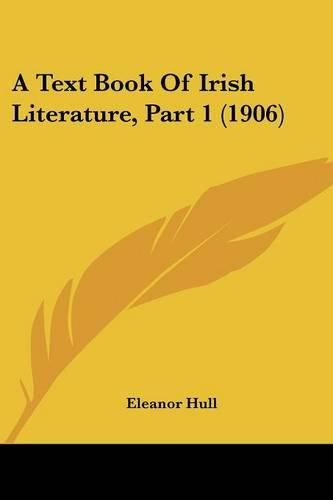Readings Newsletter
Become a Readings Member to make your shopping experience even easier.
Sign in or sign up for free!
You’re not far away from qualifying for FREE standard shipping within Australia
You’ve qualified for FREE standard shipping within Australia
The cart is loading…






Purchase of this book includes free trial access to www.million-books.com where you can read more than a million books for free. This is an OCR edition with typos. Excerpt from book: CHAPTER IV. Historical Probability of the Fenian Legend. Before examining the separate tales more closely, let us return for a moment to the traditions of Fionn’s ancestry and personality. We have said that the Fenian legends appear to have arisen among the Firbolg peoples, but the question still remains: was Fionn an actual chief of Leinster warriors, and did such a body of troops ever actually exist as we hear of in the traditions of the Fianna, over whom Fionn is represented as presiding either as captain of a local militia or as an over-sea conqueror and guardian of Ireland in the Norse period ? To answer the latter part of the question we can appeal to the history of the period. The method of attack by the Norse and the defence offered by the Irish are well known, and we may say at once that there is no notice in the history of a force organised under its own leaders for the defence of the country, independent of the tribal and provincial chiefs or of the Kings of Tara. The tribal system, in which each chief called out and sustained his own tribesmen in the field, himself leading them to battle, was in full sway during the Norse period and was the ordinary method of defence. There was, indeed, just such quartering of soldiers upon the people as was complained of under the Fenian regime, but it was Norse or Norse-Irish fighting-men from whose exactions the native inhabitants suffered. There is no sign during the Norse period of the existence of an organised militia forpurposes of national defence such as is pictured in the Fenian tales. But for purposes of foreign warfare it is probable that in Ireland, as elsewhere, bodies of mercenary troops under powerful leaders would constantly be raised, who would be independent of the claims of the sept and would be ready for service…
$9.00 standard shipping within Australia
FREE standard shipping within Australia for orders over $100.00
Express & International shipping calculated at checkout
Purchase of this book includes free trial access to www.million-books.com where you can read more than a million books for free. This is an OCR edition with typos. Excerpt from book: CHAPTER IV. Historical Probability of the Fenian Legend. Before examining the separate tales more closely, let us return for a moment to the traditions of Fionn’s ancestry and personality. We have said that the Fenian legends appear to have arisen among the Firbolg peoples, but the question still remains: was Fionn an actual chief of Leinster warriors, and did such a body of troops ever actually exist as we hear of in the traditions of the Fianna, over whom Fionn is represented as presiding either as captain of a local militia or as an over-sea conqueror and guardian of Ireland in the Norse period ? To answer the latter part of the question we can appeal to the history of the period. The method of attack by the Norse and the defence offered by the Irish are well known, and we may say at once that there is no notice in the history of a force organised under its own leaders for the defence of the country, independent of the tribal and provincial chiefs or of the Kings of Tara. The tribal system, in which each chief called out and sustained his own tribesmen in the field, himself leading them to battle, was in full sway during the Norse period and was the ordinary method of defence. There was, indeed, just such quartering of soldiers upon the people as was complained of under the Fenian regime, but it was Norse or Norse-Irish fighting-men from whose exactions the native inhabitants suffered. There is no sign during the Norse period of the existence of an organised militia forpurposes of national defence such as is pictured in the Fenian tales. But for purposes of foreign warfare it is probable that in Ireland, as elsewhere, bodies of mercenary troops under powerful leaders would constantly be raised, who would be independent of the claims of the sept and would be ready for service…